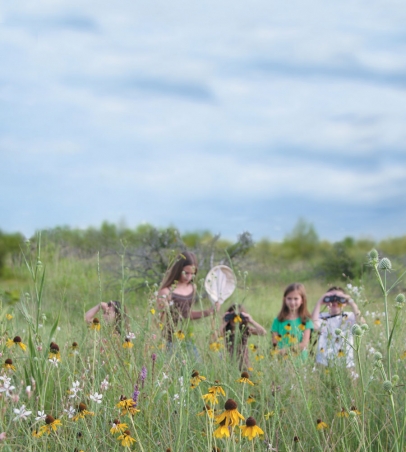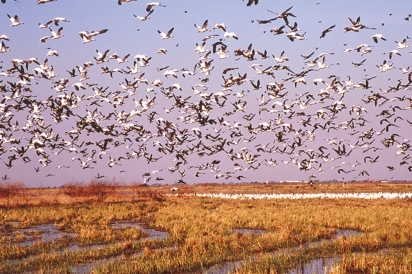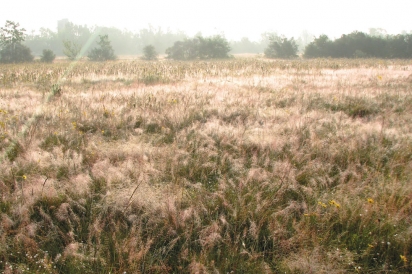Houston's Prairie Culture - An Ocean of Waving Green
Prairie culture and agriculture are Houston’s culture
In 1836, General Sam Houston’s forces fought and won Texas independence from Mexico on the San Jacinto prairie on Buffalo Bayou. That same year, the Allen brothers established their settlement at the confluence of Buffalo and White Oak Bayous and named it Houston to honor the general’s victory.
Soon after, the City of Houston welcomed the first wave of European immigrants looking for agricultural land to farm and homestead. Since then, Houston’s westward expansion on the seemingly endless coastal prairie has been an integral part of the city’s historical narrative.
Shortly after his arrival from Germany in 1846, Frederick Roemer, one of just a few naturalists who chronicled our early prairie ecoregion, set out from Houston on horseback to explore Texas. In doing so, he traversed the coastal prairie.
Roemer described the prairie, as far as he could see, as an ocean of native grasses taller than his horse’s withers, where a man could stand erect without being seen. Even after a three-day ride, Roemer saw no end to this prairie that extended more than 70 miles. He also chronicled ephemeral prairie pools and a vast array of prairie grasses and colorful wildflowers that provided habitat and sustenance for native and migratory birds and wildlife and also for his traveling party, who hunted for their dinner.
In the mid-1800s, immigrant farmers homesteaded the coastal prairie land—estimated at 1,000 square miles (nearly a million acres) that lay west of Houston. Many referred to a large island of wetland cane west of Houston surrounded by prairie grass as Cane Island and that later became Katy, Texas. Today, following nearly a century and a half of prairie settlement and development, only a small percentage of this once-vast prairie ecosystem remains. A remnant resides within the protected confines of the Katy Prairie Conservancy (KPC). Established in 1992, KPC manages over 20,000 prairie acres between Katy and Cypress with its mission: “To protect a sustainable portion of the Katy Prairie for the benefit of its wildlife and all Texans forever.”
“Many of Houston’s residents don’t realize that the prairie and Houstonians have a shared history,” said Jaime González, KPC community conservation director. “Some of the first jobs in Houston consisted of cutting up pieces of the prairie and selling it. The initial buyers were people with the grit and gumption to farm and ranch the prairie, giving rise to Houstonians’ reputation for optimism, hard work and success.”
González said that this success story should not be surprising. Humans everywhere and throughout history have used ecosystems to get what they need to prosper. He said: “For our region, the major ecosystem was the coastal prairie and at one time it must have looked vast and unlimited to serve our purposes.” With only a limited amount of it left, the major issue facing Houstonians today and in the future is how the remaining portion of our prairie can be saved while reaping the benefits it can still provide.
Just as the immigrant farmers and the native populations before them, KPC founders discovered agriculture operations were integral to their conservancy’s mission. Said Sam Reese, manager of the Warren Ranch, one of the largest remaining working cattle ranches on the Gulf Coast prairie: “If you catch somebody that is 70-plus years old who has some memory of the way things used to be, their perception of our prairie is much different than most people that grew up here in current times. To old-timers, the prairie meant agricultural opportunity mostly done with nature in mind.”
At KPC, what Reese and his colleagues are doing demonstrates the benefits of a more natural form of agriculture. They have shown that natural farming and ranching can often be more economical than using many of the non-native methods associated with conventional farming that were attempted here in more recent decades.
According to Reese: “First and foremost, we are running cattle on leased conservancy land: We are both looking to make money. KPC money is used to help fund prairie acquisition, restoration, outreach and education. We also realize that the prairie existed and thrived for millennia due to the existence and movements of large ruminant animals like the bison, and the presence of wild fire that regularly disturbed the prairie ground. These are things that naturally stimulated plant diversity, a healthy prairie and as a result attracted wildlife. Today, we use our cattle do the same thing American Bison did for centuries and use controlled fires to stimulate both nature and agriculture.”
Wesley Newman, KPC’s conservation director, discussed the organization’s outreach efforts. “Our agricultural operations show local farmers and ranchers more natural and sustainable ways to work the land. Our events also bring in the public, especially schoolchildren, so that they can see the prairie and its agricultural legacy.”
A consistent message from both Reese and Newman is that many Houstonians today really don’t understand much about the prairie or prairie agriculture. When schoolchildren come out to KPC, staff and volunteers often use guided tours and demonstrations to help recon nect them with their prairie heritage through the products they know and that the prairie can generate.
They agree that rebuilding our city’s prairie culture requires a linkage between the prairie, farming and the things kids enjoy on a daily basis. Once city-raised kids come and spend time on the prairie, they have what KPC staffers call their “light blub moments” where they start to understand what food and fiber crops are, and that the livestock they see grazing on the prairie are really “Fajitas on the Hoof.” There are also many people—kids and adults alike—who don’t know why there is a Katy Rice Harvest Festival. Many people who go to the festival have never seen rice grow. They don’t know what it looks like and that rice growing was once a major endeavor on the Katy prairie.
Through KPC outreach, many area farmers now recognize the effectiveness of native methods. As an example, many native grasses once re-established are more robust than many of the “improved” grasses of foreign origin that were brought here by well-intentioned but misguided people with a plan to aid agriculture. The truth is that native grasses make good feed and don’t need extensive use of fertilizer, and their deep root systems make these grasses drought tolerant, holding moisture from rain that would otherwise just be runoff.
“The question going forward is how we can save the prairie that is left and learn how to demonstrate its usefulness and value,” González said. “The prairie may be a very ancient thing but we need to remember that it still has relevance for our modern society. Prairie lands and green spaces offer Houstonians modern benefits such as flood mitigation, carbon capture, minimizing city heat island effects and recreational opportunities.” All of those “address real problems for our increasingly urbanized region. They offer tangible returns on the investment if made in conserving the remaining prairie lands we have.”
KPC Executive Director Mary Anne Piacentini described how KPC’s mandate started, evolved and what it could become in the future. “Our organization started in 1992, and during 1994 hosted a Conference on the Katy Prairie, where a group of environmental, scientific and business leaders came together to explore how to protect the Katy Prairie. The biologists and other scientists recommended protecting between 30,000 and 60,000 acres of Katy Prairie to ensure adequate land for the wildlife that depended on the prairie. Today, KPC owns nearly 14,000 acres of the 20,000 acres of its conserved lands. Going forward we hope to work even more closely with community partners and private landowners to save more land— land that will be privately owned and permanently conserved. These lands will continue to be used by the landowners for hunting, bird watching, farming or outdoors enjoyment.”
If we are looking for ways to reap a new harvest for prairie culture and agriculture, the current high level of interest in the local food and farm-to-market movements and in community-supported agriculture may be one answer. Conservation easements, in one form or another, can reduce the price of agricultural land for small farmers through offsets for permanently protecting the land’s conservation values.
“We continue to support agriculture on the Katy Prairie and are exploring ways that land trusts around the country are working with farmers and ranchers to support local food causes,” Piacentini said. “It would be an attractive proposition to all parties if we can help lower the barrier to getting these activities started while also helping to support nature on prairie lands.”
MODERN DAY BENEFITS
At the recent Wildscapes Workshop organized in Houston by the Native Plant Society of Texas, González and his experts panel discussed some of the prairie’s modernday benefits to Houston. These include:
• Flood mitigation through the massive water-holding capacity of deep-rooted prairie plants and clay-loam soils
• Atmospheric carbon (CO2) capture in prairie plants and grasses
• Conversion of urban landscapes to prairie green spaces to minimize city heat island effects
• Recreation opportunities like hunting and fishing and family-oriented ecotourism on prairie lands








